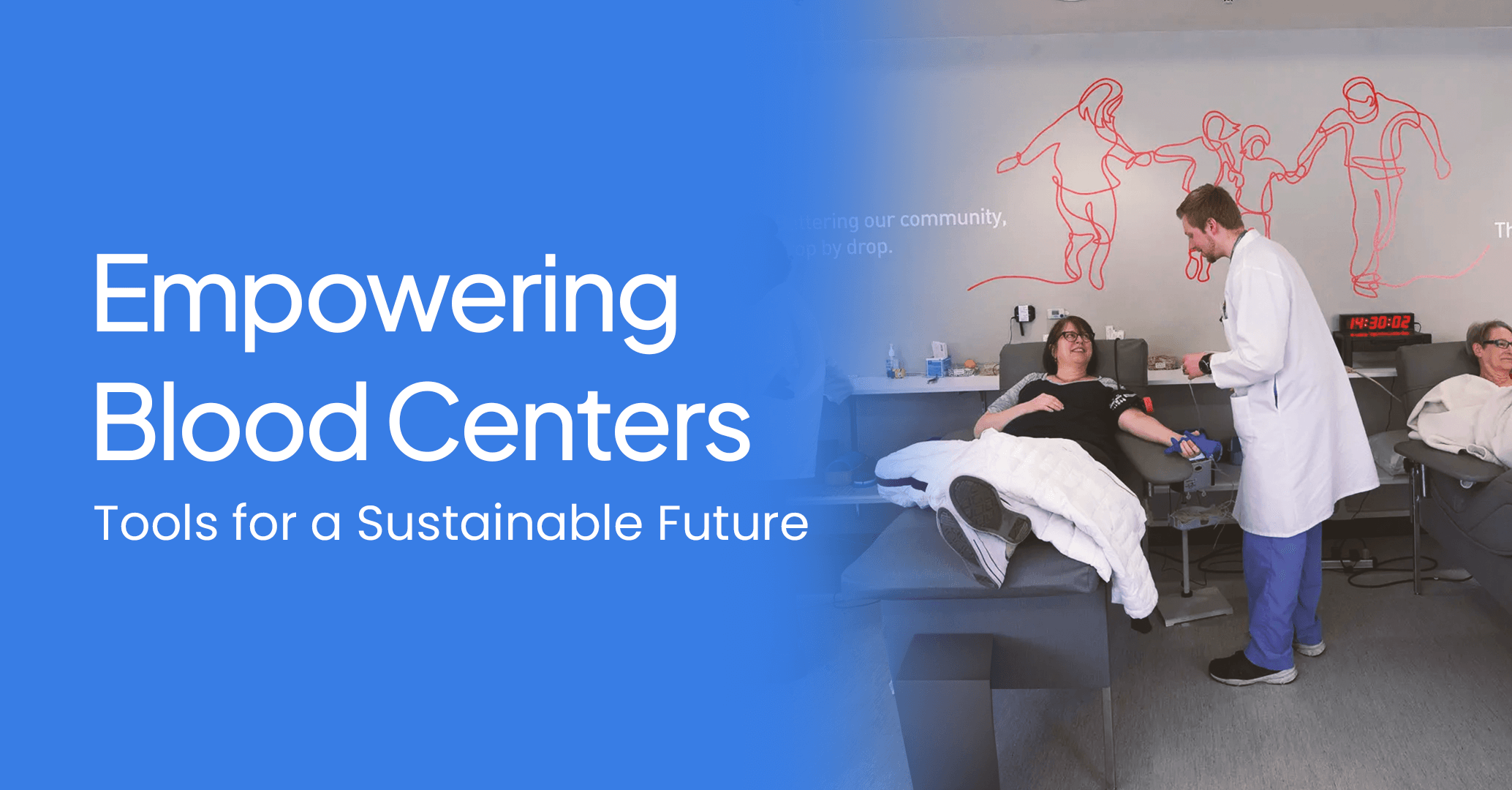The essential role of blood centers in healthcare systems cannot be overstated. They are the fulcrum upon which the balance of life-saving blood supply and demand rests. Yet, many blood centers face significant challenges, from donor retention to inventory management.
In this context, the integration of innovative tools and strategies becomes critical for creating a sustainable future for blood centers. This blog post explores the various tools and approaches that can empower blood centers, ensuring a resilient and efficient operation.
Understanding the Challenges
Before delving into solutions, it’s crucial to comprehend the challenges faced by blood centers. These include:
- Donor Retention: The perennial issue of retaining and motivating blood donors.
- Supply Chain Management: Ensuring a balanced blood supply that meets variable demand.
- Regulatory Compliance: Adhering to stringent health and safety regulations.
- Resource Allocation: Efficient use of resources to maximize impact.
Innovative Tools for Empowerment
Addressing these challenges requires a multifaceted approach, leveraging technology and innovation. Here are some key tools that can transform the landscape:
1. Advanced Data Analytics
The power of data analytics cannot be underestimated in the context of blood centers. By harnessing big data, centers can gain insights into donor behavior, demand patterns, and supply chain inefficiencies. Predictive analytics can forecast demand, helping to avoid shortages or overstocking.
2. Donor Engagement Platforms
3. Mobile Blood Collection Units
Flexibility in blood collection is key to reaching more donors. Mobile units equipped with the latest technology can travel to donors, making the process more convenient and increasing donor turnout.
4. Blockchain for Traceability
Implementing blockchain technology can enhance the traceability and integrity of the blood supply chain. By creating an immutable ledger of donations, processing, and distribution, blood centers can ensure transparency and compliance with health regulations.
5. Virtual Reality Training
Virtual reality (VR) can revolutionize training for blood center staff, offering realistic simulations for various scenarios. This technology ensures that staff are well-prepared for any situation, enhancing overall efficiency and safety.
6. AI-Powered Inventory Management
Artificial intelligence (AI) can optimize inventory management, ensuring that blood products are used efficiently and wastage is minimized. AI algorithms can help in predicting the shelf life of blood products and optimize their distribution.
7. Integration of Telemedicine
Telemedicine can play a vital role in donor screening and follow-up. By incorporating telehealth services, blood centers can provide pre-donation consultations and post-donation care remotely, enhancing donor convenience and engagement.
8. Social Media and Digital Marketing
Effective use of social media and digital marketing strategies can significantly boost donor recruitment and retention. Creating awareness campaigns and sharing success stories online can inspire community members to donate blood.
9. Collaboration with Educational Institutions
Partnering with schools, colleges, and universities to organize blood donation camps and educational seminars can help in cultivating a culture of donation among the younger generation. These partnerships can also lead to research collaborations for improving blood donation and processing technologies.
10. Customized Donor Rewards Programs
Implementing personalized reward programs can motivate donors to return. Rewards can range from recognition in community events to partnerships with local businesses for discounts or special offers.
11. Expansion of Blood Typing and Genetic Testing
Advanced blood typing and genetic testing can improve the matching of donors and recipients, especially for rare blood types and complex transfusions. This can lead to better patient outcomes and more efficient use of blood products.
12. Implementation of Lean Management Principles
Adopting lean management principles can streamline operations, reduce waste, and improve overall efficiency. This includes process optimization, staff training, and continuous improvement initiatives.
13. Development of a National Blood Donor Registry
Creating a national registry of blood donors can aid in quickly identifying and mobilizing donors during emergencies or when rare blood types are needed. This centralized system can improve coordination among different blood centers and healthcare facilities.
14. Use of Wearable Technology for Health Tracking
Encouraging donors to use wearable technology for health tracking can lead to better donor health and safety. Data from these devices can provide insights into the optimal times for donation based on individual health metrics.
15. Investing in Research and Development
Continuous investment in research and development is crucial for the innovation of new blood donation and processing technologies. This can lead to more efficient and safer blood donation practices.
Sustainable Strategies
Beyond tools, sustainable strategies are essential for the long-term success of blood centers. These include:
1. Community Engagement
Building strong community ties ensures a steady flow of donors. Blood centers should engage in community events, awareness campaigns, and educational programs to foster a culture of blood donation.
2. Collaboration with Healthcare Providers
Strong partnerships with hospitals and clinics can improve the efficiency of the blood supply chain. Collaborative planning and data sharing can help in better managing the demand and supply of blood products.
3. Environmental Sustainability
Blood centers should also focus on reducing their environmental impact. This includes optimizing energy use in storage facilities and reducing waste through efficient blood product management.
4. Continuous Innovation
Staying abreast of technological advancements and integrating them into operations is crucial for the future-proofing of blood centers. Continuous innovation ensures that centers remain efficient, compliant, and responsive to changing demands.
Closing Thoughts
The empowerment of blood centers is a multifaceted endeavor. It requires the adoption of advanced tools like data analytics, donor engagement platforms, mobile collection units, blockchain, VR training, and AI for inventory management.
However, it also demands the implementation of sustainable strategies in community engagement, collaboration with healthcare providers, environmental sustainability, and continuous innovation. By embracing these tools and strategies, blood centers can secure a sustainable future, ensuring that they continue to save lives and serve communities effectively.
In this journey towards a sustainable future, the role of each individual and organization involved in the blood donation process is pivotal. The collective effort to enhance efficiency, engage donors, and embrace innovation will not only transform blood centers but also strengthen the entire healthcare ecosystem. Let’s work together to ensure a resilient, efficient, and life-saving blood supply for all.
